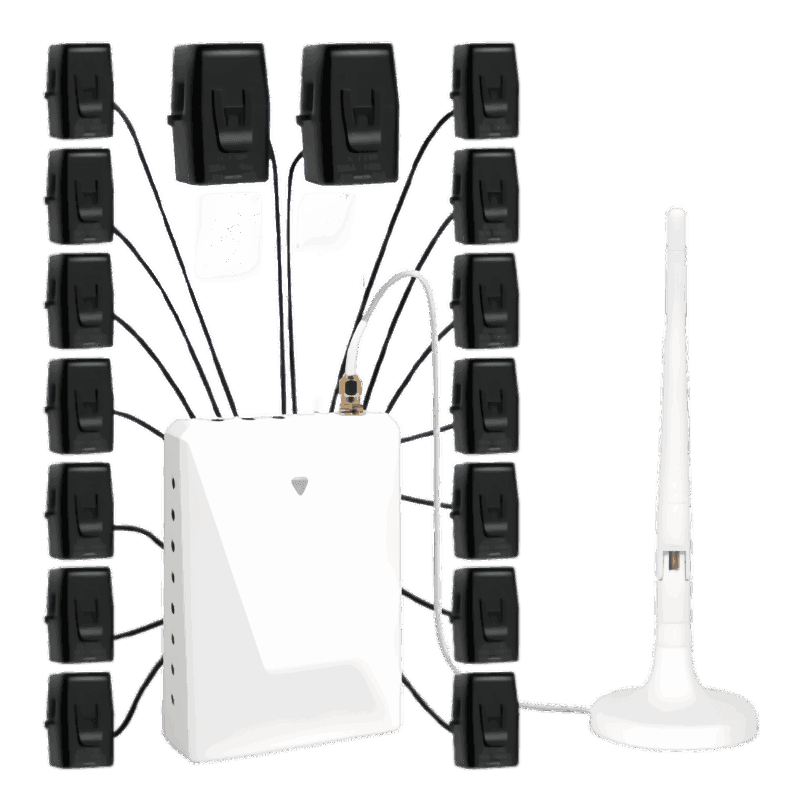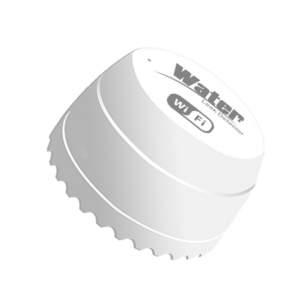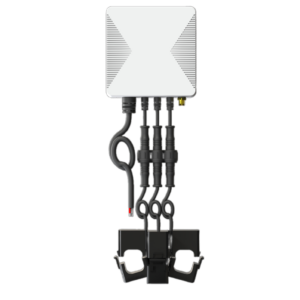Don’t Let Summer Heat Burn Your Wallet
Every summer, millions of homeowners watch their electricity bills spike as air conditioners and HVAC systems run day and night. With climate change intensifying heatwaves and energy costs continuing to rise, it’s more important than ever to take control of your cooling habits.
The good news? Lowering your summer utility bill doesn’t require sacrificing comfort—it just takes smart habits and even smarter technology.
In this article, you’ll discover:
- The top energy saving tips for home cooling
- How a smart thermostat in 2025 can significantly reduce electricity bills
- Real-world examples of homeowners who saved hundreds this summer
1. Why Summer Bills Are So High—and What You Can Do About It
Cooling your home accounts for over 50% of your electricity usage during summer months, according to the U.S. Energy Information Administration. Most of that usage comes from central air systems running inefficiently—or too frequently.
The top causes of inflated summer energy bills:
- Thermostats set too low for too long
- Manual temperature changes that overcompensate
- Lack of automation when you leave home
- Ignoring peak-hour pricing from utility providers
✅ Step one to saving energy at home is understanding how your system behaves—and fixing wasteful patterns.

2. Energy Saving Tips for Home Cooling in 2025
Here are some of the most effective, actionable tips to keep your home cool and your bills under control:
A. Set It and Don’t Forget It (Too Much)
- Aim for a temperature of 76–78°F when you’re home
- Increase to 82°F or higher when away
Each degree you raise your thermostat saves about 3% on cooling costs.
B. Use Ceiling Fans Strategically
- Fans make you feel cooler—but don’t actually lower room temperature
- Turn them off when you leave the room
C. Block the Sun
- Close blinds and curtains during peak sunlight hours
- Consider solar window film for rooms facing west or south
D. Avoid Heat-Generating Activities Midday
- Run dishwashers and laundry machines in the evening
- Use microwave or outdoor grill instead of oven
E. Replace Dirty HVAC Filters
- A clogged air filter can increase energy consumption by 5–15%
3. Why a Smart Thermostat Makes a Big Difference
If you’re still adjusting your thermostat manually, you’re likely losing money without realizing it.
Modern smart thermostats in 2025 are AI-enhanced and app-connected, making energy savings automatic. Here's how:
| Smart Feature | Benefit |
|---|---|
| Learning Algorithms | Adjust temperature based on your behavior |
| Geofencing | Change settings when you leave or return home |
| Peak Pricing Awareness | Avoid running AC when utility rates are highest |
| App Control | Adjust temps from anywhere—even on vacation |
| Energy Usage Reports | See exactly when and how your energy is used |
🔍 A smart thermostat 2025 isn’t just a gadget—it’s a cost-saving, carbon-reducing assistant.
4. Best Smart Thermostats of 2025: Which One is Right for You?
With so many brands promising automation, AI, and comfort, how do you choose the best smart thermostat in 2025?
Here’s a breakdown of top-performing models this year, including the Grus EcoNet lineup:
🔸 EcoNet-HP (Grus Advanced Heat Pump Thermostat)
- Best for: Homes with heat pumps and variable-speed systems
- Key features:
- AI-based adaptive scheduling
- Dual-stage heating/cooling support
- Full integration with Grus smart energy ecosystem
- Mobile + voice control (Alexa, Google, SmartThings)
🔹 EcoNet-TU (Grus Smart Heat Pump Thermostat)
- Best for: Budget-conscious families looking for energy savings
- Key features:
- Time-based scheduling
- Intuitive app interface
- Peak-hour alerts and energy tips
- Seamless compatibility with Grus energy monitors
🔸 EcoNet-RV (Grus Radiator Valve Controller)
- Best for: Homes using hot water radiators or hydronic systems
- Key features:
- Room-by-room temperature zoning
- Built-in occupancy sensor
- Easy DIY installation on most TRV-compatible radiators
🔸 EcoNet-BH (Smart Baseboard Thermostat)
- Best for: Baseboard heater systems in condos and northern regions
- Key features:
- High-voltage compatibility (up to 240V)
- Precision control with weekly schedules
- Overheat protection and open window detection
📊 Smart Thermostat Comparison Table
| Model | System Type | AI Optimization | Remote Access | Grus App Integration | Best For |
|---|---|---|---|---|---|
| EcoNet-HP | Heat pump (multi-stage) | ✅ | ✅ | ✅ | All-season HVAC homes |
| EcoNet-TU | Heat pump (basic) | ⚠️ Basic | ✅ | ✅ | Entry-level users |
| EcoNet-RV | Radiator valve | ✅ | ✅ | ✅ | Zoned heating users |
| EcoNet-BH | Baseboard (240V) | ⚠️ Manual | ✅ | ✅ | Condo & apartment dwellers |
5. Real-World Example: Summer Savings with EcoNet
🧑💼 Case Study: The Jackson Family – Arizona, USA
- Challenge: $320 average monthly electric bill due to 24/7 AC
- Solution: Installed EcoNet-HP + paired with Grus WattPanel-2X energy monitor
- Features Enabled:
- Adaptive AI schedule (cooler mornings, relaxed evenings)
- Remote control when away for work
- Smart automation during peak-hour pricing
📉 Results after 3 months:
- Energy bill dropped by 35% (avg $208/month)
- Cooling system runtime reduced by 18%
- Setpoint habits adjusted with no loss of comfort
“I didn’t realize how wasteful we were until EcoNet showed us. It paid for itself in 2 months.”
— M. Jackson, homeowner in Phoenix
⚠️ Bonus Tip: Combine with Smart Monitoring
Smart thermostats alone are powerful—but pairing them with a home energy monitor gives you visibility across all systems.
Try combining:
- EcoNet-TU + Grus WattPanel-2X → For heat pump homes
- EcoNet-BH + Grus WattNet-1 → For baseboard apartments
You’ll see what’s driving your costs—not just when, but why.
6. Time-of-Use Strategies: Peak vs. Off-Peak Savings
Many utility companies now use Time-of-Use (TOU) pricing, where energy costs fluctuate by hour. Understanding this is key to unlocking deeper savings—especially in summer.
⏱️ Peak Pricing Tips:
- Peak hours (typically 4 PM – 9 PM): Energy is most expensive
- Off-peak (overnight or midday): Energy is cheapest
By scheduling your thermostat to pre-cool your home before peak hours and coast during expensive times, you can maintain comfort without paying a premium.
--- title: "Summer TOU Electricity Usage Strategy" --- flowchart TD A["Midday (12PM)<br/>(Off-Peak)"]:::midday -->|Pre-cool Home| B["Comfort Maintained"]:::cool B -->|Enter Peak Hours| C["Peak Hours (4–9PM)"]:::peak C -->|Raise Thermostat| D["Reduced AC Runtime"]:::ac D --> E["Lower Electricity Bill"]:::save %% 分色 classDef midday fill:#b3e5fc,stroke:#0288d1,stroke-width:2px,color:#01579b,rounded:10px classDef cool fill:#ffe082,stroke:#fbc02d,stroke-width:2px,color:#7c6500,rounded:10px classDef peak fill:#ffcdd2,stroke:#d32f2f,stroke-width:2px,color:#b71c1c,rounded:10px classDef ac fill:#b2dfdb,stroke:#00897b,stroke-width:2px,color:#004d40,rounded:10px classDef save fill:#c8e6c9,stroke:#388e3c,stroke-width:2px,color:#205620,rounded:10px
7. Summary: Your Summer Energy-Saving Toolkit
If you’re serious about cutting your summer electricity bill—without melting in the heat—follow this 3-part strategy:
✅ 7.1 Optimize Habits
- Use fans strategically
- Close blinds in hot afternoons
- Avoid using oven/laundry mid-day
✅7.2 Install a Smart Thermostat
- Choose one that supports AI scheduling and remote control
- Grus EcoNet-BH is the best smart thermostat for electric baseboard heaters.
✅ 7.3 Monitor and Adjust
- Use an energy monitor like WattPanel-2X to track trends
- Adjust HVAC timing with TOU awareness
“You can’t manage what you can’t measure—Grus helps with both.”
📣 Final CTA: Upgrade to Smarter Cooling with Grus.io
Whether you’re in a single-family home, apartment, or condo—Grus has a smart thermostat built for your space:
🔧 Explore Now:
- EcoNet-HP: Best for heat pumps and full HVAC control
- EcoNet-BH: Ideal for high-voltage baseboard heaters
- EcoNet-RV: Perfect for radiator and hydronic heating
- WattPanel-2X: Monitor your entire home energy in real time
🌐 Visit here to choose your perfect summer upgrade.



